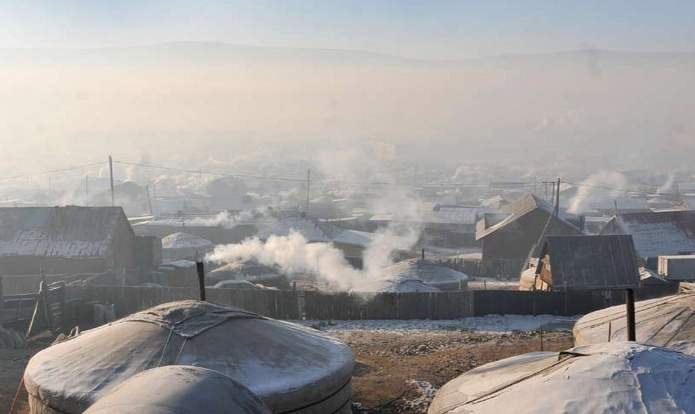Trauma Training in Mongolia: A Look Inside
Dart Centre Asia Pacific spoke to media trainer Lisa Gardner about Mongolia’s pollution problem and preparing local journalists to investigate the story in Ulaanbaatar, the world’s second-most polluted city, where the poor air quality accounts for 25% of deaths.

Lisa Gardner, an Australian media trainer working in Mongolia, recently led a six-journalist team beginning an extensive feature investigation into the effects of living in such pollution.
As the team moved into its research, Lisa became concerned the journalists – many of whom were newcomers to such intense investigation – would encounter harrowing and possibly traumatic stories of illness and mortality. To help prepare them and their newsroom managers she reached out to Dart Asia Pacific.She turned what she learned, particularly in the area of self-care techniques, into an advisory article which can be read here:
The Dart Centre asked Gardner about the project.
Dart: Most people would be surprised that covering a story on air pollution, no matter how bad, would be traumatising for journalists. Why did you feel the need to prepare for that possibility?
Lisa Gardner: Air pollution is by no means a conventional area in which journalists might be expected to experience or come across trauma. Certainly not as one might in, say, war, conflict, or crime.
Initially our journalists were also skeptical. If the brown haze of pollution had proved such reason for concern, then why had local media outlets not given greater coverage to the problem?
Thus in this case news that the toxic air would prove responsible for the deaths of so many city residents proved especially traumatic, given that the magnitude of the problem was largely unknown and therefore subsequent trauma was almost wholly unexpected.
Dart: Who was your trauma preparation aimed at and what was the initial reaction?
LG: Both the journalists, in terms of self-care, and their managers.
“It can be difficult to introduce a discussion centered on trauma prevention when the journalists themselves do not expect that emotional or psychological turmoil might follow.
Therefore it’s vital that, wherever possible, editors and managers slowly introduce proactive communication between journalists as part of regular media practice. Long before potentially traumatic incidents do occur, it's best to ensure that there are open channels of communication in which it becomes routinely part of the process to informally ask, "Are you doing okay?” What do you expect to hear, say, during that interview - and how do you expect this may affect you?
This meant that by the time we conducted trauma-oriented training, our team had already become accustomed to this new routine of proactively looking out for one another's mental health.
Dart: How was Dart Asia Pacific helpful and how did you come to reach out to us?
LG: When I worked in Thailand I covered some difficult stories: skirmishes on the Thai-Cambodia border; land abuse cases; political prisoners; and many cases of corruption. I sometimes struggled emotionally and psychologically.
But I had learned of the Dart Centre at uni and remembered to confer with the Dart website. The material there certainly helped me acknowledge that some of these more uncomfortable feelings were brought about by the nature of my work and that support was indeed available.
Preparing for this project I emailed Cait McMahon in Melbourne and from then on, via email, she and Dart Centre staff provided clear, prompt directives as to how best to conduct trauma-oriented workshops, advice that could be readily implemented by those media practitioners without a background in psychology or trauma.

































































































